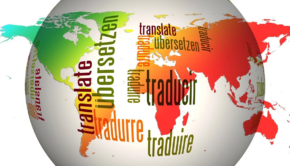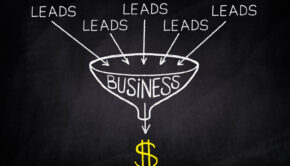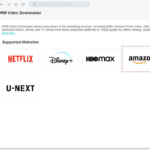3 Ways to Hide Your IP Address
The e-commerce industry is growing at an increasing rate and is estimated to hit $5.42 trillion this year.
Yet only businesses that prioritize data and make very meaningful use of it are known to dominate the market and get a bigger share of the above figure.
This makes data collection the most important part of doing business in the digital world. Data can be used to conduct accurate market research, attract new customers from different parts of the world, and understand what the competitors are doing.
Below, we will consider one of the most effective data collection processes, web scraping, and how it helps businesses grow in a highly competitive marketplace.
Important Areas That Help Businesses Grow
There are several areas that a brand must pay attention to if it wants to grow. For starters, brands need to be sure they do what the market and their customers want and not just anything they feel.
Paying attention to consumer behavior is critical to manufacturing products and services that sell faster.
Also, companies need to pay attention to what their competitors are doing to extract important information that can greatly affect their business.
Competition monitoring can occur in gathering their SEO or tracking the prices of similar products and services. This helps the brand understand how to set prices that can guarantee profitability while retaining customers.
Competitor price monitoring is also an important step in monitoring minimum agreed price (MAP) compliance. This helps to ensure some competitors do not have an undue advantage by selling below the agreed market price.
Another important aspect that ensures growth for companies is continually building a selling list by generating leads regularly.
Lead generation ensures that the brand always has customers to sell to.
What Is Web Scraping?
Web scraping can be defined as automatically harvesting large quantities of web data from multiple sources simultaneously.
The automation commonly associated with web scraping helps to eradicate the strain of collecting large quantities of data while guaranteeing higher data accuracy.
The data is usually harvested from several websites, but you need o first know how to extract data from a website even to get started.
To harvest data from a site, you will need tools such as proxies and scrapers. The proxies will help transfer the request to several servers while navigating past any restrictions online. They also help to keep you safe and discreet during the operations.
The scrapers are the web spiders that go from URL to URL and from hyperlink to hyperlink to find and gather the data you need.
The process, which often starts with the request to fetch unstructured HTML files, ends with well-formatted structured data that can be used to improve business.
Primary Use Cases of Web Scraping
Web scraping offers data in abundance, and this data can be used in several ways, with the below being the common examples of the primary use cases of web scraping:
1. Lead Generation
Because buyers are the lifeline of any legitimate business, there is always the need to have a pool of individuals that can be converted to paying buyers easily.
These are often called leads, and they include individuals familiar with your products or services but have never patronized you.
Web scraping is used to generate these lists from common marketplaces automatically. The more valid list a company has, the higher its chances of performing better in the market.
2. SEO Analysis
Businesses, new or old, need to watch what is happening on search engines. Search engines are where the internet searches for products and services or other information.
These searches often determine who dominates the market and makes the most sales.
Businesses use web scraping to gather useful data from search engines and then use that data to optimize their content to ensure they perform better on search engines. Scraping, in this case, can be used to gather anything from keywords to content types. Yet, the result often helps a brand get more visibility and, consequently, more sales.
3. Brand Monitoring
Brand monitoring became a very popular concept once businesses discovered that even single negative feedback left unattended is enough to impede sales and tumble a company.
Buyers now check for reviews online and use those to judge whether or not to patronize a company.
Brand monitoring is used to strategically watch different forums and platforms on social media to catch when something is being said about the brand.
Appropriate action can then be taken depending on what you find out.
4. Sentiment Analysis
Understanding consumer sentiments will help you craft products and services that most closely relate to their experience.
This is often a much more effective way to win their trust and patronage. And web scraping is often used to gather customer opinions in large quantities. This data can then be analyzed to understand better what the users’ experiences are.
Conclusion
Data helps to deliver better results than any other known business ingredient. And businesses that overlook high-quality market data often end up leaving too much money on the table and making little or no profits. To learn more about website data acquisition, Oxylab’s blog articles cover it in more detail.















